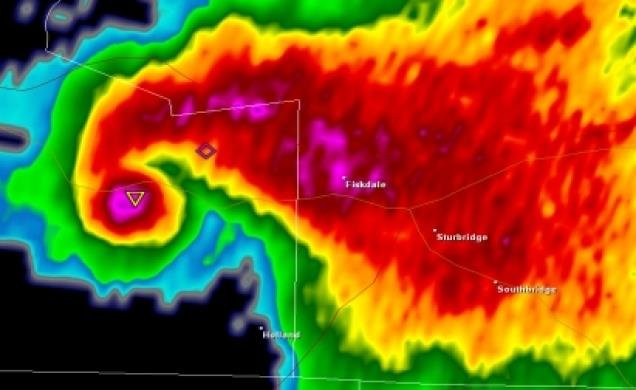-
Posts
78,285 -
Joined
-
Last visited
Content Type
Profiles
Blogs
Forums
American Weather
Media Demo
Store
Gallery
Everything posted by weatherwiz
-

September Discussion Thread: Bring the frost; kill the bugs.
weatherwiz replied to moneypitmike's topic in New England
Not for you -

September Discussion Thread: Bring the frost; kill the bugs.
weatherwiz replied to moneypitmike's topic in New England
It is very depressing looking through the 384-HR GFS and not seeing much CAPE across the country -

September Discussion Thread: Bring the frost; kill the bugs.
weatherwiz replied to moneypitmike's topic in New England
the cold just sucks...it really, really sucks. 30's...40's it's tolerable (a bit annoying when wind is involved) but days when it its in the teens or even 20's and we get into the single digits at night (or below-zero) with wind...just nothing fun or enjoyable about that at all. -

September Discussion Thread: Bring the frost; kill the bugs.
weatherwiz replied to moneypitmike's topic in New England
see they smart I will agree...the gnats and bugs that swarm you in the summer really suck...that's probably the only thing I hate. -

September Discussion Thread: Bring the frost; kill the bugs.
weatherwiz replied to moneypitmike's topic in New England
Even the penguins hate winter...that's why they're dying. they offing themselves -

September Discussion Thread: Bring the frost; kill the bugs.
weatherwiz replied to moneypitmike's topic in New England
Outside of snow winter is pointless...it's stupid. It's depressing how short our warm season is up here and it's even more depressing when you factor in the length of day changes. And how many good snow storms to we really get a winter anyways? and honestly...outside of the weather aspect and what drives us to love snow...snow makes winter even worse as it creates more hassle than it's worth. There is zero enjoyment being outside in the winter...ZERO. People can say what they want about the heat and the summer but at least outside of peak heating hours, being outside is tolerable and at least there is the beach/ocean to go to. Where do you go in the winter....ummm nowhere...maybe you're lucky and have a fireplace or a wood stove...but that is still INSIDE. Winter's you have to wear all this clothing and long sleeve crap and if you get dressed before you do your hair...you're totally screwed. -

September Discussion Thread: Bring the frost; kill the bugs.
weatherwiz replied to moneypitmike's topic in New England
Eventually a '38 redux will occur and we may have to never worry about when leaves change color again -

September Discussion Thread: Bring the frost; kill the bugs.
weatherwiz replied to moneypitmike's topic in New England
IDK why the US Regional maps section is not working...but that way for month https://www.nrcc.cornell.edu/regional/regional/regional.html -

September Discussion Thread: Bring the frost; kill the bugs.
weatherwiz replied to moneypitmike's topic in New England
You can't compare temperatures in September with that of August...you can still have a summer-like pattern in September but because of the climatological decrease in temperatures, descending sun angle, and other factors, of course you won't see widespread upper 80's and 90's (especially the further north you go). We've been above-average in terms of temperatures for the month. Summer can't be and shouldn't be defined by temperatures either. The pattern we have been in...even this month is more typical of summer, but because we are nearing the equinox and going through the beginning transition phases (especially at higher latitudes) we are more prone to getting weaknesses within the pattern (which is what drives the fronts through and these brief cooler periods)...but at the end of the day after these brief fronts/troughs we end right back into a summer pattern -

September Discussion Thread: Bring the frost; kill the bugs.
weatherwiz replied to moneypitmike's topic in New England
I agree...I think any sort of troughs we see here would be more transient than sustaining. I think though we could be primed for a pattern change moving towards mid-October and that might feature a sustained period of below-average temperatures with active weather. Lots of noise in the medium-to-long range which seems indicative that we are seeing the hemisphere transition from summer to fall (and eventual winter). Noticing though we really may start to see changes with the jet configuration across the western Pacific...lots of wave breaking being modeled and momentum deposit into the high latitudes. Another thing to watch too are the signals for these tropical waves of the Southeast U.S. coast when become pretty strong and get shot north. -

September Discussion Thread: Bring the frost; kill the bugs.
weatherwiz replied to moneypitmike's topic in New England
Quite a bit of uncertainty towards the end of the month and the first week of October. Not that this would be totally unusual for this period but I envision sort of a rollercoaster type pattern where we alternate well above-average with near or slightly below-average temperatures (although what will happen is we are either going to be well above-average or somewhat below-average...don't think there is a middle ground). You can see the huge spread quite well just by looking at NAO forecasts alone. There are some hints though we could get some pseudo-blocking. Hell...even uncertainties with what happen across the West...huge spread in the PNA signal too. -

September Discussion Thread: Bring the frost; kill the bugs.
weatherwiz replied to moneypitmike's topic in New England
I had a dream last night there was some crazy system working through the deep south and parts of AL and FL were going to get snow...in September -
I saw a flash of lightning on my way to work this morning!!! It was fork lightning
-
Lack of stronger s/w forcing probably was a big factor too. The bulk of the s/w forcing was in SE Canada...which can usually benefit NNE but it was a bit farther north into Canada. If the stronger height falls were a bit quicker I bet it would have made a difference. Just too much of a disconnect between sfc front and upper-level forcings
-
One thing of note today was how poor the llvl lapse rates were. Obviously a product of lack of sun and strong sfc heating but it's very difficult to get widespread high wind event with poor llvl lapse rates...especially when the shear alone isn't anything overly through the roof
-
Don't count your chickens before they shit
-
Not bad indeed
-
We may see some heavy downpours and embedded thunderstorms move across the state but don't think we really see much else...in fact, they may weaken considerable as they move across the state. Everything outruns the better forcing and dynamics
-
Yeah good point...and actually looking at potential storm motions that may hinder the TOR potential too. Winds only continue to veer too with height moving through the day
-
@Damage In Tolland for the confused face... referring to not a good sign for severe weather within that extensive watch area across NY/PA. I think the real severe threat is going to best east of that watch.
-
3km CAPE is quite impressive already and looks like CIN eroding rather quickly. I think the best severe potential is well east of where the watch currently is. I see the new MCD out...kinda shocked it doesnt indicate TOR watch possible given the environment.
-
Already looks like the sfc front is pretty much nearing the line of TCU/showers across NY/PA...not a very good sign
-
That is certainly a great point and another piece which certainly needs to be considered.
-
The last decade has been rather intriguing regarding severe weather, both locally and nationally. It's very difficult, however, to draw any type of conclusions because the dataset regarding severe weather is not only small but the degree of accuracy is even smaller. What we have seen this past decade is; 1. "Tornado Ally" has shifted a bit east...for so many years the Great Plains were considered the tornado home of the U.S. but last decade there has been a sharp increase just along/east of the Mississippi River to the Appalachian Mountains. 2. A decrease in strong/violent tornadoes (obviously there have been some monsters) 3. An increase in "out of season" tornadoes across the Northeast region and even nocturnal tornadoes...but thankfully the majority of these tornadoes have remained weak (of course we have some exceptions). But if we continue to see these themes of higher dewpoint air and higher dewpoint air occurring earlier in the season and later in the season we will continue to see an increase in these "out of season" setups.
-
I haven't been storm chasing in like 3 years...sucks. And I mean like real chasing...waking up and like 6 AM and driving out to like New York or Pennsylvania and setting up shop. I don't count my trips to BDL because well I live 2 minutes from there. I mean there was that time a month or so ago my friend and I went deep into Massachusetts. I've been wanting to go to the Plains now that I have excess vacation time but...THEY DON'T GET SEVERE WEATHER ANYMORE






